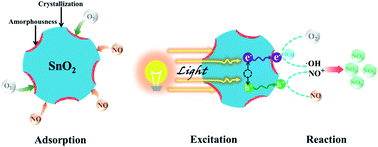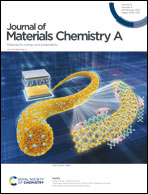The crystalline/amorphous stacking structure of SnO2 microspheres for excellent NO photocatalytic performance†
Abstract
Surface amorphization via a crystalline/amorphous core–shell structure is known to be an effective approach to construct a high-efficiency photocatalyst. It enables decreasing of the bandgap of the crystalline core and facilitates rapid carrier transmission between the core and shell. However, this kind of structure induces light blocking for the crystalline core that results in fewer photogenerated carriers. In this work, we have fabricated SnO2 microspheres with a novel crystalline/amorphous stacking structure that has a significant effect on photocatalytic NO removal under visible light irradiation. The increase in the NO removal photocatalytic performance is attributed to the increased charge separation efficiency at the crystalline/amorphous interface arising from the built-in electric field between the amorphous and crystalline regions. Moreover, the crystalline/amorphous stacking structure can inhibit surface absorption competition between O2 and NO. Such a process contributes towards the generation of more oxygen active species which could oxidize NO to NO3−. This work demonstrates that the utilization of the crystalline/amorphous stacking structure provides a new strategy to manipulate the charge transport and promote the photocatalytic performance for a high-efficiency photocatalytic material.



 Please wait while we load your content...
Please wait while we load your content...